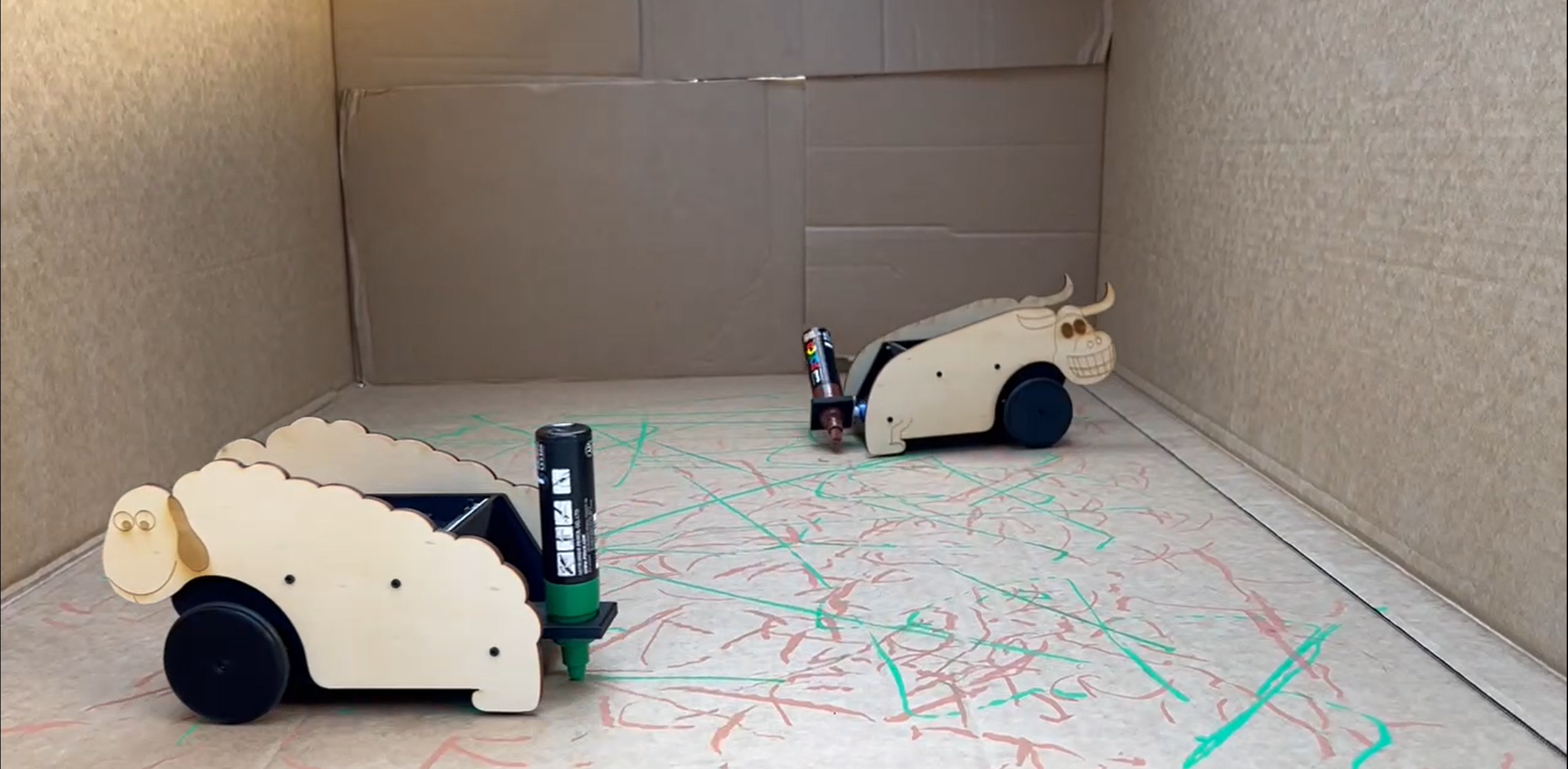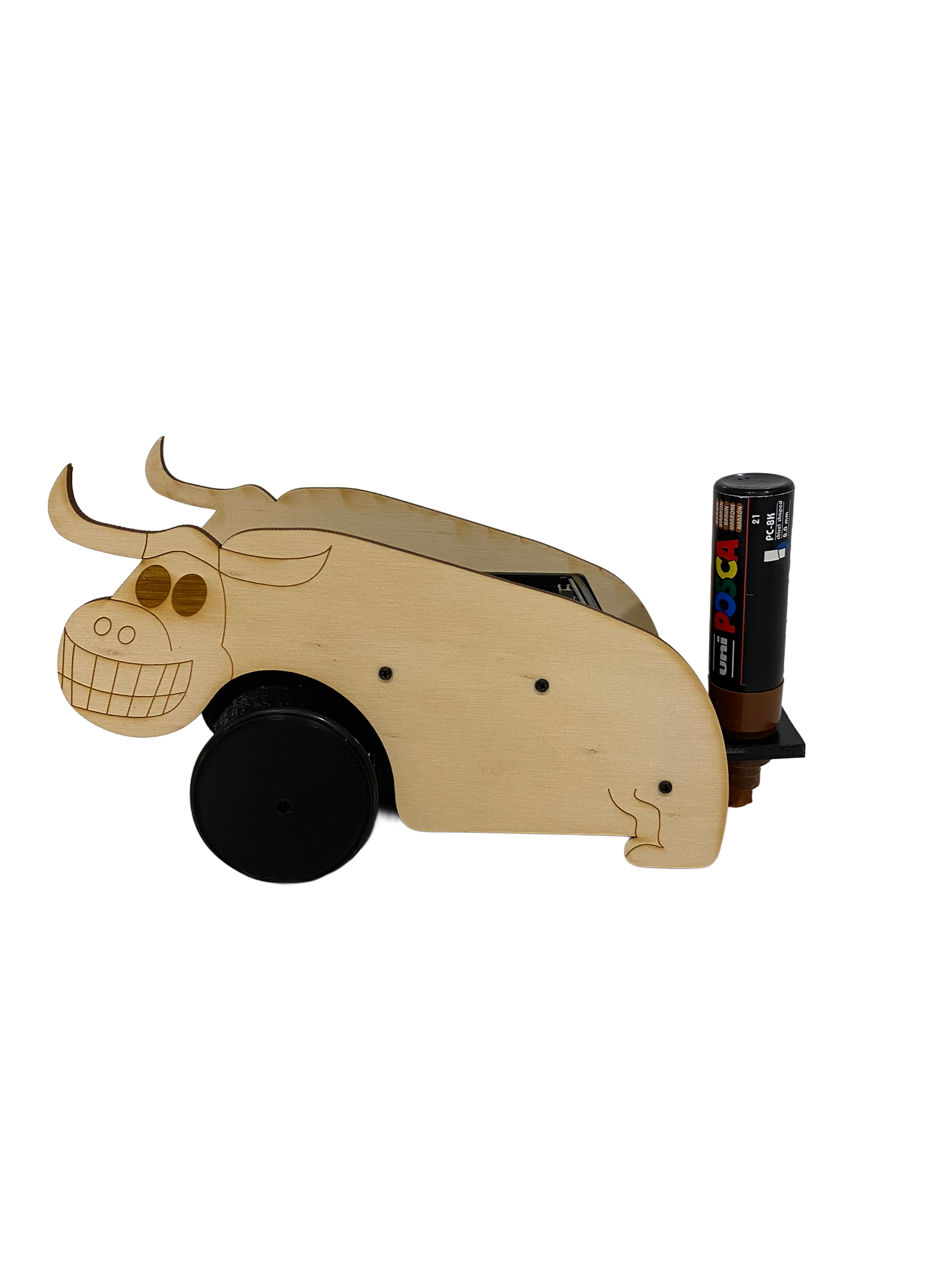.barnyard
breakout
Developing early childhhod STEM skills through interactive mechanics.
Context
Science, Technology, Engineering and Mathematics (STEM) skills will become an increasing priority in a highly industrialized and globalized world. Early childhood exposure to STEM concepts through play helps to boost experimentation and creativity.
Barnyard breakout is a project that was conceived as an interactive mechanical drawing machine that I could develop with my children. The project takes inspiration from my child’s imaginary friend. For many years we had an imaginary bull, Ferdinand, living in our house. He was a friendly but disruptive bovine and the source of many laughs.
Now Ferdinand has escaped his paddock and is terrorizing the neighbouring animals by leaving huge piles of dung around. The other terrified animals dash around the paddocks leaving their own tracks through the grass.
-
The concept was planned, sketched and presented for feedback and to confirm the initial manufacturing process. Components for this project were modelled in Fusion 360 (3D prints) and Illustrator (laser cutting). A particular focus of the design process was to simplify the manufacturing process so that multiple animals could all be produced easily with only 1 component, that being the animal shape, being changed.
-
Rapid prototyping was conducted using electrical components and cardboard to determine the optimal size and chassis configuration. A number of 3D printed parts, such as servo housings and base plates, enabled flexible adjustments to component placement. This iterative process significantly enhanced the overall chassis layout, particularly by modifying the mounting position of the battery pack.
Wheel design and diameter were subject to substantial prototyping. Initial 3D printed wheels lacked sufficient traction, which was addressed by incorporating O-rings to improve grip.
Laser cut animal bodies were tested to ensure ease of attachment to the chassis, with the finalized design utilising offset screw patterns.
The Microbit coding underwent an extensive prototyping phase, resulting in thirteen iterations being developed, loaded, and evaluated prior to finalisation. The ultrasonic sensor’s sensitivity proved to be the most challenging aspect of the coding process.
User testing was primarily conducted in expansive, unobstructed environments. However, initial trials on A2 paper revealed limitations in movement space for the interactive elements. Transitioning to a larger canvas area resolved these constraints, and when Ferdinand was running, he elicited squeals of delight.






